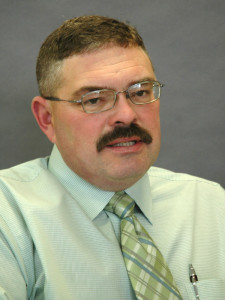
By Rick Hirsch/County Extension Agent
Frost? Spring is just around the corner, fruit growers need to remain concerned about frost protection throughout the end of March. As little as two or three degrees difference in temperature can be critical in making or breaking a fruit crop. I know we have had warm temperatures and rainy days, but the average last frost date in Henderson County is March 19 , which more than half the time we receive frost and freezes after that date.
Peaches, as well as other early blooming fruits such as plums, apricots, nectarines and blueberries are most vulnerable. Later blooming fruits and nuts including pecans, apples, grapes and blackberries are less likely to receive frost damage but do not always escape.
Many methods of frost protection by temperature control and bloom delay have been tried and several are used commercially.
Water applied both under and over fruit trees can provide varying amounts of protection. Flood irrigation shortly before or during a frost can produce slight warming; however, with the exception of citrus, most fruit orchards in Texas are not equipped to flood irrigate. Overhead sprinkling during a freeze can provide considerable protection if water is applied continually during freezing conditions. Heat is given off as water freezes, and as long as some free water is maintained on a bud covered with ice, the bud will remain close to 32 degrees. The chief drawback to sprinkling to sprinkling for protection is that it requires a large amount of water and in a prolonged freeze, the continual addition of ice will result in heavy limb breakage and very wet sods.
Site selection remains the best way of escaping frost damage. Orchards, particularly early blooming fruits, should always be planted on an elevated site with room for unobstructed drainage of cold air to a lower elevation. This is extremely important. There are numerous examples of orchards on excellent sites that rarely lose crops and, conversely, of orchards on poor sites that seldom make a crop because of spring frost.
Most damaging spring frosts occur on clear, still nights. Under these conditions, a temperature inversion occurs. Heat radiated from the earth’s surface rises while the heavier cold air sinks to the surface. The heavy cold air will flow downhill to the lowest available elevation. The early morning temperature in an elevated orchard is often 5 to 10 degrees warmer than the temperature in a nearby valley when there is a temperature inversion.
Other factors affecting freeze conditions include herbicide treatments and fertilizer applications.
Herbicide-treated soils are generally warmer on clear still nights than a weeky orchard because the weeds act as insulating covers, preventing the sun’s warming of the soil during the day and releasing this stores heat at night. The early morning temperature in a weedy orchard will usually be a couple of degrees cooler than the temperature in an orchard with a bare, smooth floor.
IMPORTANT DATES:
April 2 – Cattleman’s Cow-Calf Clinic – 3:00 p.m. – Henderson County Fair Park Complex, Athens – $15.00/Person – 1.5 C. E. U.’s
April 6 – 11 – Henderson County Livestock Show – Henderson County Fair Park Complex – Athens
—
Rick Hirsch is the Henderson County Extension Agent – Agriculture for the Texas A&M AgriLife Extension Service. Visit our web page at http://henderson.agrilife.org/.
